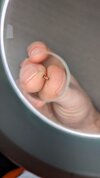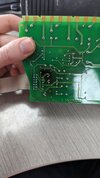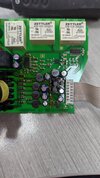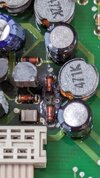Hi all,
Don't know if this is even possible but would anyone be able to get a rough ID on this diode? I don't have a schematic for the circuit board and there aren't any part numbers on it. One of the (not blown) diodes next to it has "something" V 5 on it, if that helps at all. They may have been part of a rectifier circuit but I'm not 100% on that.
Thanks for any help
Don't know if this is even possible but would anyone be able to get a rough ID on this diode? I don't have a schematic for the circuit board and there aren't any part numbers on it. One of the (not blown) diodes next to it has "something" V 5 on it, if that helps at all. They may have been part of a rectifier circuit but I'm not 100% on that.
Thanks for any help




